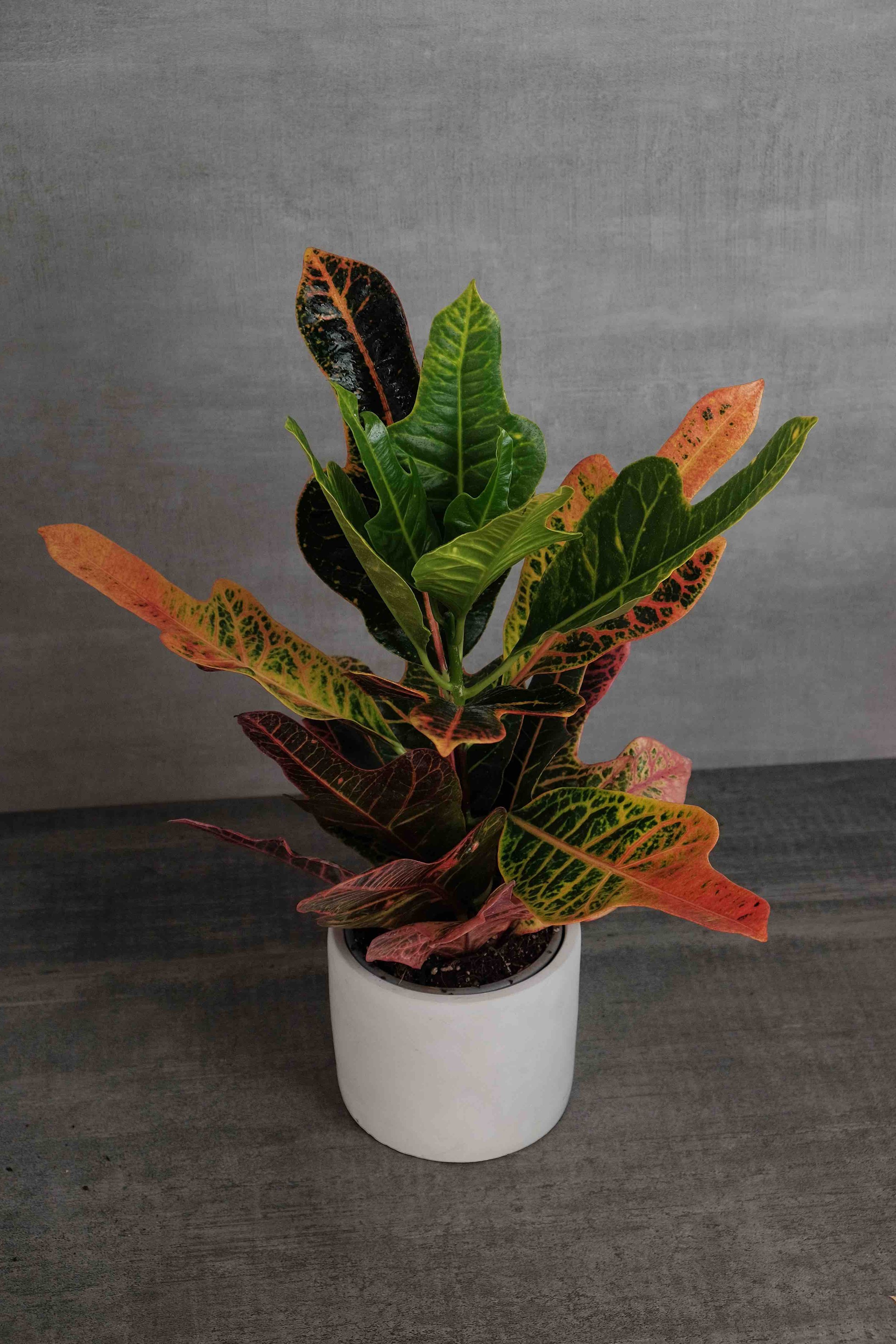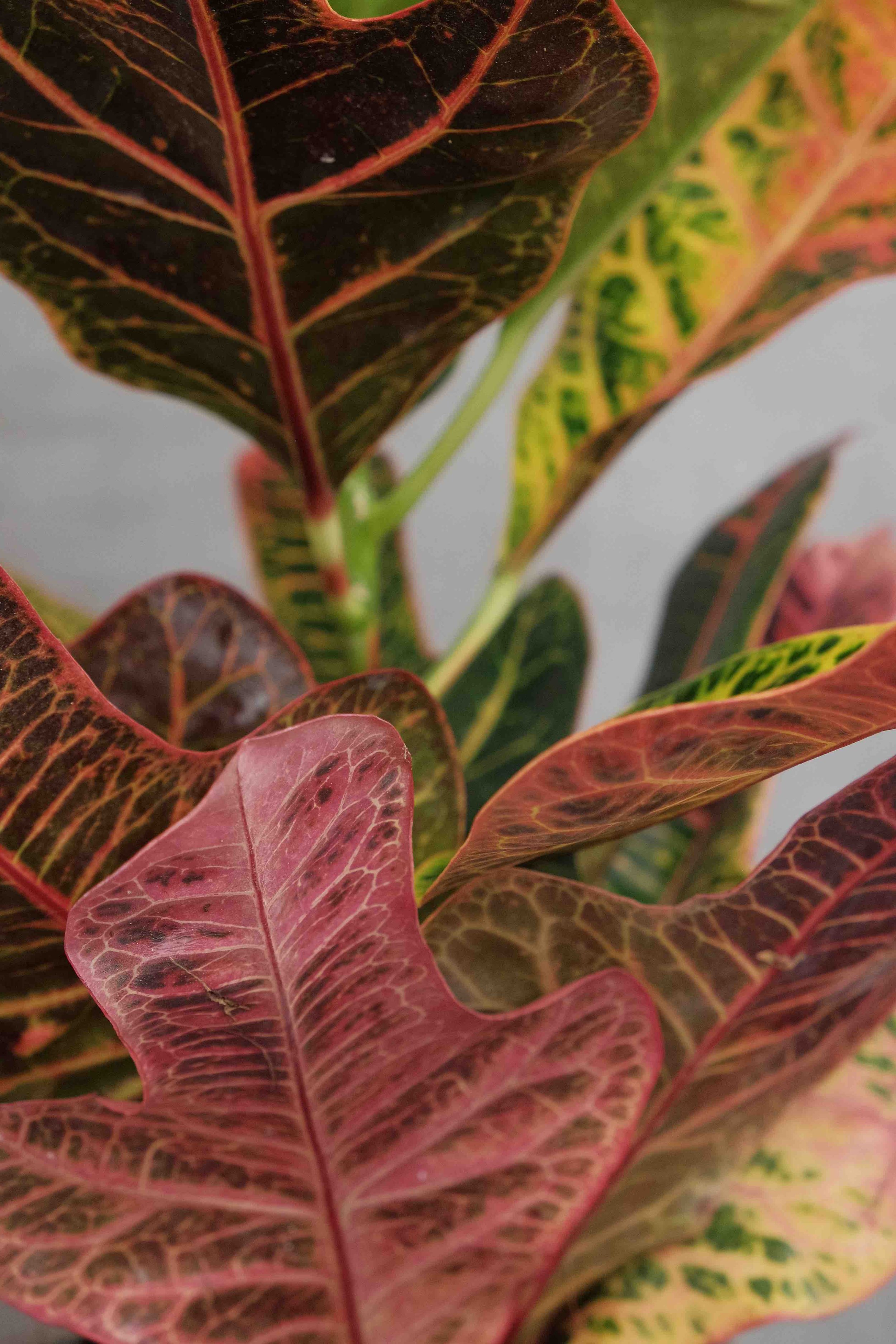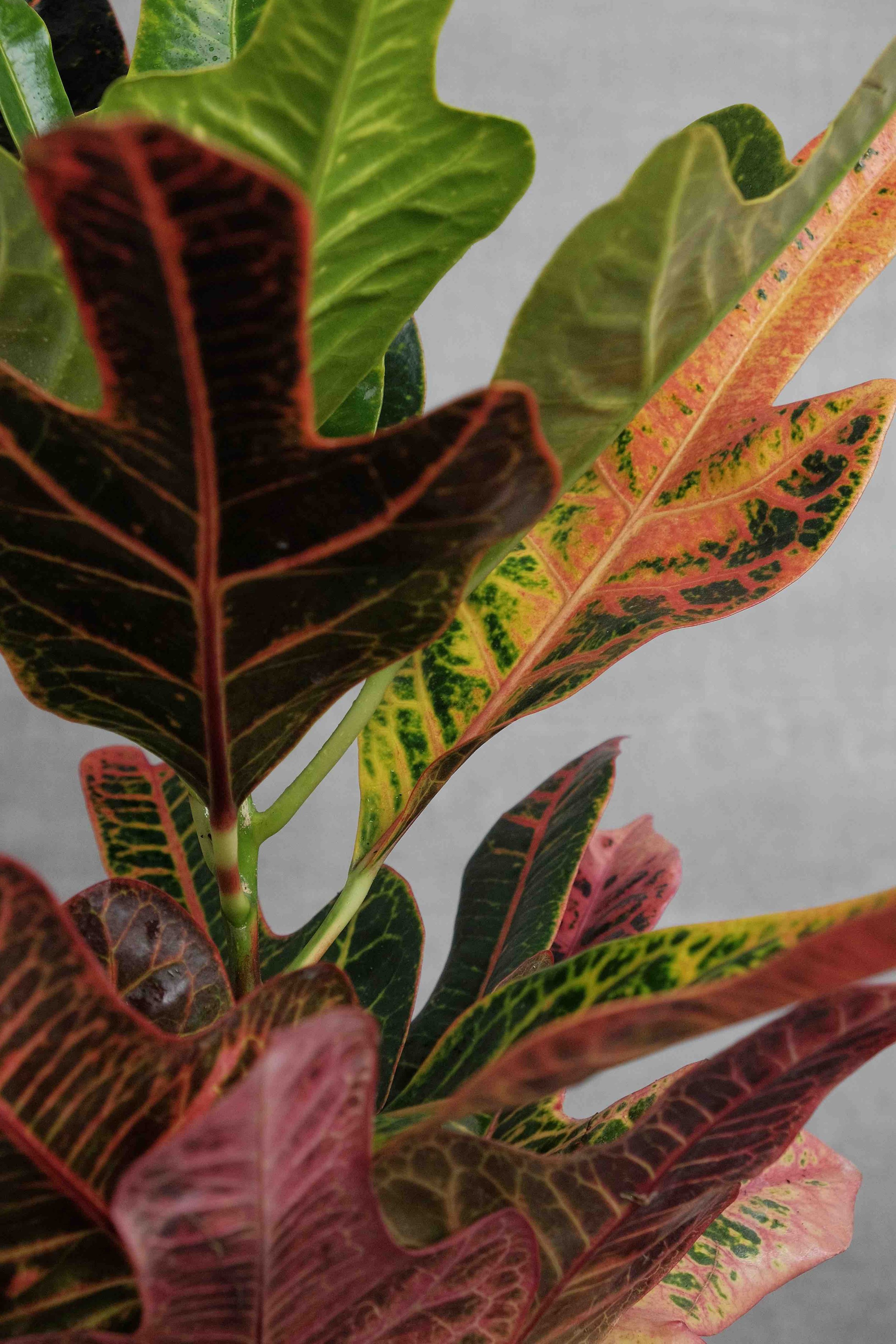Plant Profile
Croton
a.k.a. Codiaeum variegatum
Croton, also known as Codiaeum variegatum, is an eye-catching tropical plant known for its colourful and variegated foliage. Crotons have bright, glossy leaves with an array of shades and patterns, including green, yellow, orange, red, and pink. These plants grow up to 10 feet tall in their native habitats but are often grown as houseplants and can be trimmed to maintain their size and shape.
Top Tips
✔ Water Crotons moderately and avoid overwatering.
✔ Crotons thrive in bright and indirect sunlight and high humidity levels.
✔ Fertilize Crotons once a month during the growing season with a balanced liquid fertiliser.
Plant Care
-
Crotons prefer bright and indirect sunlight but can tolerate some shade. If kept in low light conditions, the leaves may not develop their full colour.
-
Crotons require moderate watering and prefer well-draining soil. Water the plant when the soil is dry to the touch and avoid overwatering, as this can cause root rot.
-
Crotons thrive in warm temperatures and high humidity levels. A humidifier or regular misting can help keep the plant healthy.
-
Crotons should be fertilised once a month during the growing season (spring and summer) with a balanced liquid fertiliser. Avoid fertilising during the winter months as the plant enters a period of dormancy.
-
Crotons thrive in warm temperatures between 60°F and 75°F (15°C to 24°C).
-
Crotons are toxic to pets and can cause vomiting and diarrhea if ingested in large quantities. Keep them out of reach of curious pets and children.
-
Crotons can be propagated by stem cuttings. Cut a healthy stem about 6 inches long and remove the lower leaves, leaving only a few at the top. Insert the stem into well-draining soil mixture, water lightly, and place the plant in a bright location. Cover the plant with a plastic bag to increase humidity and decrease stress on the plant.
-







Quick plant check up
Leaf drop
Over-watering or under-watering can cause the leaves to drop. Adjust the watering schedule accordingly.
Brown or crispy leaves
Low humidity levels or inconsistent watering can cause brown or crispy leaves. Increase humidity and ensure proper watering.
Wilting
Wilting is a sign of stress, and it could be caused by disease, pests, or environmental issues. Check for pests, monitor watering, and adjust growing conditions.





